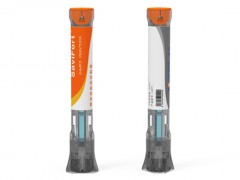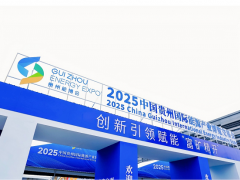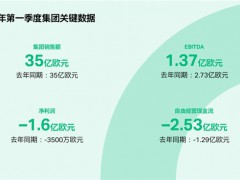據鉆機地帶10月21日報道,全球知名咨詢公司伍德麥肯茲(Wood Mackenzie)近日表示,到2030年,海上風電的年度支出將從2020年的不到200億美元增至近1200億美元,這將是石油巨頭們的下一個押注。
據伍德麥肯茲稱,石油巨頭們可以達到他們所需要的規模,但這需要時間。包括?rsted、RWE和Iberdrola在內的公用事業公司已經鎖定了到2026年的大部分海上風能管道。
但英國、美國和日本等許多政府都在加快租賃拍賣和集中招標,以推動凈零碳排放。石油巨頭正在為租賃選擇權支付高價,通常與現有公司合作,并準備參與本世紀二十年代末的下一波大型項目。
伍德麥肯茲選擇每十億焦耳當量的經營現金流作為衡量生產石油、天然氣和電力的能源公司的通用指標。當電子取代大能源生產組合中的碳氫化合物分子時,將電力、石油和天然氣轉換為一次能源當量單位可以進行直接比較。
海上風電的運營現金利潤率比未來上游油氣開發項目高出25%。它們甚至超過了油氣勘探開發利潤率最高的資產類別深水項目。海上風電項目的長壽命也使其有別于大多數深水和傳統上游項目。該項目壽命通常估計為30年,發電量穩定,幾乎沒有下降。只有國內天然氣和液化天然氣項目接近類似的情況。
這種較高的利潤率和較長的使用壽命意味著在該項目的整個生命周期內產生的現金流更高。從2025年到2040年,海上風電投資組合將為每十億焦耳當量提供4美元的平均運營現金流利潤率。對于Dogger Bank等3.6吉瓦的大型項目,這相當于在15年內產生約90億美元的實際現金流。
假設油價為每桶60美元,同樣規模的深水、液化天然氣和常規項目在同一時期內將分別產生80億美元、60億美元和50億美元的收益。
為了與其他投資選擇競爭資本,我們認為大型石油公司需要實現10%以上的內部收益率。關鍵在于如何在穩定的現金流和較高的風險之間取得平衡。
利用杠桿和資產循環,基準數字可以提高到10%左右。更高的商業價格敞口、建設“電轉x”項目(如綠色氫氣)、電力交易以及與零售相結合的方法,都提供了進一步的好處。
例如,道達爾能源正在指導其可再生能源投資組合中70%的電力購買協議和30%的商業敞口。大多數傳統合同傾向于將價格鎖定15年,只留下“尾款”——以及付出比真正價值更多的錢——暴露在批發價格中。
伍德麥肯茲的分析表明,如果各大型公司捕獲了25%的海上風電需求,到2050年,這些電子就可以取代它們在實現凈零排放過程中損失的約三分之一的油氣分子。太陽能和陸上風能可能會填補剩余的缺口,但在加速的能源轉型中,海上風能的貢獻可能會更高。
據伍德麥肯茲稱,隨著各大巨頭從大型石油公司轉變為能源巨頭,一個精心策劃、多元化的海上風電投資組合有望實現完整的一攬子計劃,但他們需要說服投資者,他們可以在海上風電領域遵循“付費參與”的策略。這通常會在上游造成糟糕的結果,扼殺回報,摧毀價值。
郝芬 譯自 鉆機地帶
原文如下:
Offshore Wind To Be The Next Bet For Oil Majors
Annual spending on offshore wind will rise from less than $20 billion in 2020 to almost $120 billion in 2030 and it will be the next bet for oil majors, Wood Mackenzie said.
According to Woodmac, majors can achieve the scale they need but it will take time. Utilities, including ?rsted, RWE, and Iberdrola, have locked in much of the offshore wind pipeline through 2026.
But the UK, Europe, the US, and Japan are among a host of governments accelerating lease auctions and centralized tenders in the push for net zero. The majors are paying up for lease options, often partnering with incumbents and positioning to participate in the next wave of big projects later this decade.
Woodmac chose operating cash flow per gigajoule equivalent (GJe) as a common metric to benchmark energy companies producing both oil and gas and power. As electrons replace hydrocarbon molecules in Big Energy production portfolios, converting power and oil and gas into units of primary energy equivalent allows a direct comparison.
Offshore wind’s operating cash margins are 25 percent higher than those of future upstream oil and gas developments. They even trump deepwater projects, E&P’s highest margin asset class. The long life of offshore wind projects also sets them apart from most deepwater and conventional upstream developments. Project lives are typically estimated at 30 years, delivering steady output with little decline in power generation. only domestic gas and LNG projects come close to having a similar profile.
This combination of higher margins and long life means superior cash flow generation through the project’s life. An offshore wind portfolio will deliver an average operating cash flow margin of $4 per GJe from 2025 to 2040. For a giant 3.6 GW project such as the UK’s Dogger Bank, that equates to around $9 billion of cash flow generation in real terms over 15 years.
Deepwater, LNG, and conventional projects of comparable scale would generate $8 billion, $6 billion, and $5 billion, respectively, over the same period, assuming $60 per bbl.
To compete for capital against alternative investment options, we think the majors need to deliver IRRs above 10 percent. The trick will be to get the balance right between the stability of cash flows and higher risk.
Using leverage and asset rotation, the baseline numbers can be boosted to around 10 percent. Higher merchant price exposure, building power-to-x projects – such as green hydrogen, power trading, and an integrated approach with retail all offer further upsides.
TotalEnergies, for example, is guiding for a 70 percent power purchase agreement and 30 percent merchant exposure in its renewable portfolio going forward. Most legacy contracts have tended to lock in prices for 15 years, leaving only the ‘tail’ – and more recently the nose – exposed to wholesale prices.
Woodmac analysis suggests that if the majors capture 25 percent of offshore wind demand, those electrons could replace about a third of the oil and gas molecules they lose by 2050 in the push to net zero. Solar and onshore wind might fill the rest of the gap but the contribution from offshore wind could be even higher in an accelerated energy transition.
As the majors morph from Big Oil to Big Energy, a well-curated and diversified offshore wind portfolio holds the promise of the full package, Woodmac claimed, but they will need to convince investors they can navigate the “pay to play” strategy in offshore wind. That’s often ended badly in upstream, killing returns, and destroying value.
免責聲明:本網轉載自其它媒體的文章及圖片,目的在于弘揚石化精神,傳遞更多石化信息,宣傳國家石化產業政策,展示國家石化產業形象,參與國際石化產業輿論競爭,提高國際石化產業話語權,并不代表本網贊同其觀點和對其真實性負責,在此我們謹向原作者和原媒體致以崇高敬意。如果您認為本站文章及圖片侵犯了您的版權,請與我們聯系,我們將第一時間刪除。







